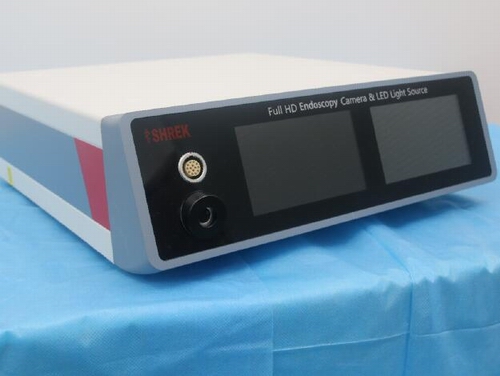Portable FHD Cystoscopy Camera System: Advancements in Endoscopy
Endoscopy is a medical procedure that uses a thin, flexible tube with a camera and light source to examine the inside of the body. Cystoscopy is a type of endoscopy that is used to examine the bladder and urethra. In the past, cystoscopy was performed using a rigid cystoscope, but with advancements in technology, portable FHD cystoscopy camera systems have become the standard in urological procedures.

A portable FHD cystoscopy camera system is a device that is used to capture high-quality images and videos of the urinary tract during cystoscopy procedures. The system consists of a camera head, light source, video processor, and monitor. The camera head is attached to the end of a flexible cystoscope and is used to capture images and transmit them to the video processor, which processes the images and sends them to the monitor. The light source provides illumination for the camera head, allowing for clear and detailed images.
One of the main advantages of a portable FHD cystoscopy camera system is the portability and ease of use. The system is lightweight and can be easily transported from one location to another. This makes it ideal for use in a variety of settings, including hospitals, clinics, and outpatient centers. Additionally, the system is easy to set up and use, which can help to reduce procedure times and increase patient throughput.
Another advantage of a portable FHD cystoscopy camera system is the high-quality images and videos that it produces. The system is capable of capturing images and videos in high definition, which allows for clear and detailed visualization of the urinary tract. This can be especially helpful in identifying and diagnosing urinary tract abnormalities, such as tumors or stones.
The use of a portable FHD cystoscopy camera system also offers several benefits to patients. Because the system is less invasive than traditional cystoscopy procedures, it can be performed without the need for general anesthesia. This can help to reduce patient discomfort and recovery times, as well as decrease the risk of complications associated with anesthesia.
In conclusion, portable FHD cystoscopy camera systems represent a significant advancement in urological endoscopy. The portability and ease of use of the system, combined with the high-quality images and videos that it produces, make it an ideal choice for use in a variety of clinical settings. Additionally, the system offers several benefits to patients, including reduced discomfort and recovery times. As technology continues to advance, it is likely that we will see further improvements in the field of endoscopy, which will continue to benefit both patients and healthcare providers.



Leave a message